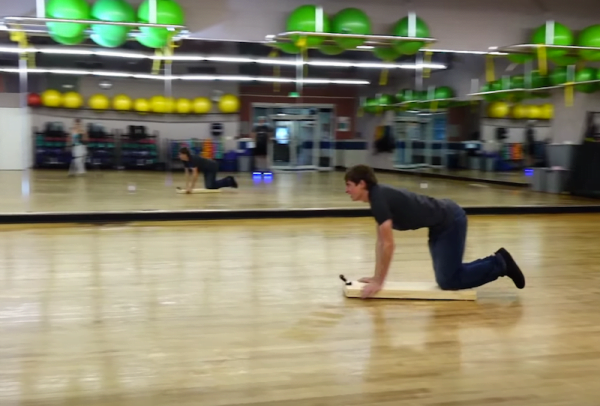
Hoverboards have been all the rage lately, even if they do catch on fire once in a while. But when they aren’t catching fire, hoverboards aren’t really doing any hovering either.
Unlike Marty McFly’s hoverboard from “Back To The Future II,” today’s hoverboards merely give the rider a sense of floating and riding above the ground. Nonetheless, they’ve become such a hit that prices for them can get jacked up to thousands of dollars.
Naturally, the more money we pay, the less likely we’d get burned since the more expensive models are typically made with higher quality materials. If there is anything getting burned, it’s the customers’ pockets.
For purists, a company called Arca Space Corporation created areal hoverboard that actually floats and glides across different kinds of surfaces. It only works for six minutes at a time. Oh, and it nearly costs $20,000 to own. (That’s $3,333 per minute of hoverboarding fun).
There is a cheaper way to get the same thrill though.
D.I.Y. projects save you a lot of money in exchange for your time and effort. In this case, all it takes some dry ice and wood plank to make a real hoverboard.
The Backyard Scientist, whose YouTube channel is filled with audacious science experiments, proves we don’t need to spend more than $100 to make a hoverboard. In fact, his hoverboard literally hovers above the ground.
“I would consider this a real hoverboard because the dry ice is not in contact with the surface,” the Backyard Scientist explains in the video’s description. “There is actually a very thin layer of gas between the two surfaces.”
The video starts off with the Backyard Scientist riding the same hoverboard we’ve all seen at malls and driveways. He eventually ditches the plastic and rubber for three blocks of dry ice, a wooden board, and a bit of styrofoam.
Does it work? It sure does. “It worked a lot better than I expected,” says the YouTuber, “It was even so slippery, it was hard to stay on sometimes.”
It may not be much of a looker, but the Backyard Scientist’s real hoverboard can glide perfectly ever so slightly above the ground as long as it’s an even surface. On uneven surfaces, the dry ice will make contact with the ground and slow the board down.
The board will slow down regardless of the surface, however, without any effort from the rider. It’s very much like a skateboard or a surfboard which requires the rider to first gather enough momentum to get going. The popular hoverboards of today make us lazy – we just simply lean in the direction we want to go and off we go.
Besides momentum, maneuverability is another key difference between the Backyard Scientist’s real hoverboard versus the mass-produced ones. In the video, the Backyard Scientist only goes in a straight line. When he attempts to turn, he slides off the board. So much for that.
So how does it work? Through a process called sublimation, the dry ice transforms from a solid into a gas and creates a cushion of vapor on which the Backyard Scientist’s board can hover and glide. In fact, the whole contraption hovers just barely over one-tenth of a millimeter above the floor.
The hoverboards of today may catch fire, and the Backyard Scientist’s is no exception. It can also cause burns if the rider is not careful with the dry ice. Simply touching dry ice can give one instant frostbite and that’s just as bad as a burn.
Should people at home decide to also build their own hoverboard, it might be a good idea to wear a helmet and some protective pads. We saw the Backyard Scientist fall off his hoverboard enough times to make us want to stick to the hoverboard on wheels we already have now.
[“source-techtimes”]

